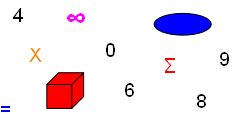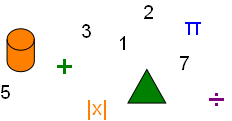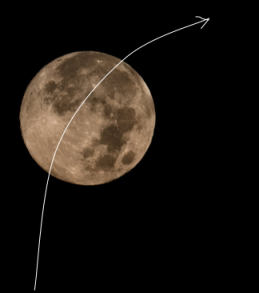



Quadratic Equations


A Quadratic Equation is a second-degree polynomial that has at least one term with degree two and no term greater than degree two. All second-degree polynomials are quadratic.
The standard form for single variable quadratic equations is:
ax2 + bx + c = 0
Where x is the variable (or unknown), “a” is the coefficient of the variable squared, “b” is the coefficient of the variable to the first power, and “c” is the term that does not contain the variable. The coefficient “a” cannot equal 0.
There are two methods of solving these equations:
- Factoring
- The Quadratic Formula
Factoring begins with easier, special situation Pure Quadratics, and progresses to more difficult polynomial math requiring a Completing the Square method.

Parabolic flight path of space ship near planet can be quadratic.
Pure Quadratic Equations
A quadratic polynomial without a first degree term having only a second degree term and constants is a Pure Quadratic. These are unique form equations and are easily solved by determining the square root of the constant.
To factor the pure quadratic x2 − 9:
(x + 3) (x − 3), then by FOIL,
x2 − 9 = 0 when x = ±3
(square root of the constant 9 is ±3)
FOIL (First - Outer - Inner - Last):
(x + 3) (x − 3) =
First:
x × x = x2
Outer:
x × −3 = −3x
Inner:
3 × x = 3x
Last:
3 × −3 = −9
x2 − 3x + 3x − 9 = x2 − 9
To factor the pure quadratic 3x2 − 15 = 0:
3x2 = 15
x2 = 15/3
x2 = 5
The roots of x2 are √5 and −√5
√x2 = ±√5, and x = ±√5
(factors ±√5 are quadratic roots)
Use of Quadratics
The application of a quadratic equation is often the trajectory of an object that is propelled upward at some angle. Since gravity always pulls toward the Earth’s center, an object after release does not travel a straight line. This trajectory can be described mathematically by quadratic equations.
A similar application of a trajectory is a space ship that while traveling passes near a planet. The planet exerts its gravitational pull on the ship causing a slight change to its flight path that can be defined as quadratic. The change of direction must be known to assure the flight path remains correct for the space craft’s destination.
While quadratic equations provide a positive and negative result for many real world applications only one of the two results is required. When both positive and negative results are graphed they create a parabola.
Copyright © DigitMath.com
All Rights Reserved.